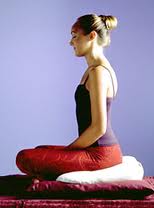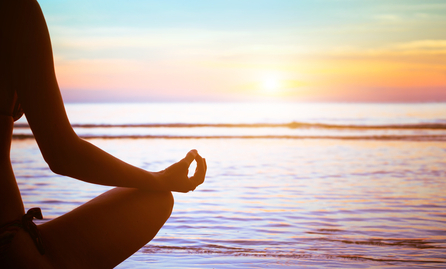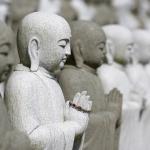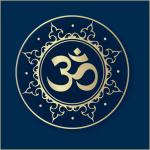Meditation – Mindfulness of Breathing
Guidelines for a Good Meditation Posture
With a view to our comfort and alertness, it is advisable that we observe the following important elements of a good posture.

- Sit up straight.
We try to keep our back, neck, and head in a straight line. The tip of your nose is over and in one line with your navel. Sitting up straight is good for optimum breathing and energy circulation. Furthermore, a straight posture costs us the least energy, radiates confidence, independence, self-esteem and alertness, exactly the qualities that we want to develop through meditation. - Back, neck, and shoulders should be relaxed.
The area of the upper back, the shoulders, and the neck is the area where stress and tension manifest themselves. This tension often causes a worsening of our posture. On the other hand, when we have a hollow or bulging posture, this leads to tension in the areas mentioned. We frequently hear that as people meditate more and more regularly, the tense areas mentioned get more and more relaxed, and it becomes easier for them to sit up straight. If we try to force ourselves to sit up straight, we discover that we cannot maintain our posture and all sorts of aches make our meditation more difficult. - Sit still.
When we sit still, we can observe our mind. We can also see how our body reacts to activity in our mind and vice versa. - During meditation, our hands rest on our knees or in our lap.
The result is that the arms can relax. The hands rest in an open position, which may include the thumb and the forefinger touching. - Keep the head well-balanced and straight over our spine.
It should feel like a string being attached to the top of the head that holds up the head. The chin is a little drawn back, with the result that the neck and shoulders relax. The tip of the nose forms one line with the navel and is exactly over it, and the ears form one line with the shoulders. When you sit up straight with a stretched out neck, it feels a bit as if your head has become weightless. - The face is relaxed.
Let the tongue get heavy and keep the jaw and all details of the face relaxed during the meditation. - Eyes may be held open or closed.
Closed eyes help you to direct your attention inwards. Open eyes direct the attention both inwards and outwards. Many people like a soft but staring focus during their meditations. We advise beginners to meditate with their eyes closed.
Mediation using breath as a focus
Beginning meditators are often asked to count their breath, on the exhalation, up to ten. Then you begin back at one. If you lose track, simply go back to one. Your breath should be slow and regular, but not forced or artificially controlled. Just breathe naturally and count.
A few weeks later, you may forego the counting and simply try to follow your breath. Concentrate on it entering you and exiting you. Best is to be aware as fully as possible of the entire process of breathing, but most people focus on one aspect or another: the sensation of coolness followed by warmth at the nostrils, or the rise and fall of the diaphragm. Many meditators suggest imagining the air entering and exiting a small hole an inch or two below your navel. Keeping your mind lower on the body tends to lead to deeper meditation. If you are sleepy, then focus higher, such as at the nostrils.
You will inevitably find yourself distracted by sounds around you and thoughts within. The way to handle them is to acknowledge them, but do not attach yourself to them. Do not get involved with them. Just let them be, let them go, and focus again on the breath. At first, it might be wise to scratch when you itch and wiggle when you get uncomfortable. Later, you will find that the same scant attention that you use for thoughts and sounds will work with physical feelings as well.

Shikantaza
A more advanced form of meditation is shikantaza, or emptiness meditation. Here, you don’t follow anything at all. There is no concentration — only quiet mindfulness. You hold your mind as if you were ready for things to happen, but don’t allow your mind to become attached to anything. Things — sounds, smells, aches, thoughts, images — just drift in and out, like clouds in a light breeze.
Many people have a hard time with their thoughts. We are so used to our hyperactive minds, that we barely notice the fact that they are usually roaring with activity. So, when we first sit and meditate, we are caught off guard by all the activity. So some people find it helpful to use a little imagination to help them meditate. For example, instead of counting or following your breath, you might prefer to imagine a peaceful scene, perhaps floating in a warm lagoon, until the noise of your mind quiets down.
Meditate for fifteen minutes a day, perhaps early in the morning before the rest of the house wakes up, or late at night when everything has quieted down. If that’s too much, do it once a week if you like. If it works for you, do more. Don’t get frustrated. And don’t get competitive, either. Don’t start looking forward to some grand explosion of enlightenment. If you have great thoughts, fine. Write them down, if you like. Then go back to breathing. If you feel powerful emotions, wonderful. Then go back to breathing. The breathing is enlightenment.








